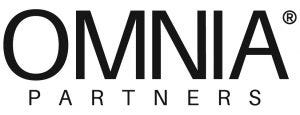
Omnia Partners
Mobility platforms and data analytics can add value to transit infrastructure upgradesMobility platforms and data analytics can add value to transit infrastructure upgrades
July 23, 2023

Local government officials need to expand their definition of infrastructure, says Konstantin Spasov, vice president of business development at Modeshift. The firm provides account-based fare collection solutions that help transit agencies modernize their urban fare and data collection infrastructure. The company offers tools that enable transit systems to upgrade their end-user technology. The firm’s offerings help agencies improve efficiency and provide sustainable service.
He says infrastructure includes much more than just roads and pavement repairs. “Data analytics tools and mobility platforms added to existing systems can make a huge difference when it comes to planning and operations. These platforms are in high demand right now, especially as cities establish new sustainability goals.” He adds that it’s not necessary to scrap everything and start fresh. Instead, planners just need to think of ways to improve and build on existing transit and other operations.
There is one thing government officials can do to get the most out of these types of infrastructure investments, Spasov tells Co-op Solutions. “It is important to take inventory of current systems and think about how data analytics tools and mobility platforms can improve the overall efficiency of existing systems.”
Spasov says infrastructure teams are relying more on legal and consulting services that focus on helping state and local governments comply with federal funding requirements. “These services ensure that state and local organizations are compliant with requirements for federal grant funding related to transportation and infrastructure projects. With constant regulatory updates, these services are critical to ensure agencies are viable candidates for government funding, which is critical right now as public transit agencies are facing a fiscal cliff.”
What’s more, according to Spasov, data mining software and services are in high demand right now as local governments work to meet the needs of their constituents. “These products create opportunities to analyze large data sets of constituent feedback regarding infrastructure issues, which is an essential step for local government agencies to take as they work to properly allocate resources. Data analysis is also an essential part of any smart city.”
Using technology to save time is crucial, Spasov believes. “Any new software platforms that assist in reducing the time in the procurement review and approval process for infrastructure projects will dramatically reduce employees’ efforts in sifting through thousands of available products.”
Cities and counties have some new ways to procure infrastructure products and services, Spasov explains. He sees software as a service (SaaS) as a potential solution. SaaS allows users to connect to and use cloud-based apps through the internet. “With SaaS offerings and other business models on the rise, organizations should consider buying infrastructure products and services that can be purchased on a monthly basis, with no upfront capital investment. By investing in subscription-based models, local governments can access the latest technology and integrate it with existing infrastructure while lowering upfront costs and improving scalability to keep up with the needs of their constituents and see real results.”
Spasov sees the above infrastructure buying strategy as being crucial for local governments. “In today’s economic landscape, agency budgets are constrained across the board.” The following link spotlights some of Modeshift’s product offerings.
Spasov outlines another path to effective infrastructure purchasing: “Local government agencies can leverage the latest digital software platforms to streamline and centralize the procurement review process to create operational efficiency. Centralizing the procurement review process helps speed up the decision-making process, efficiently moving tasks through the pipeline while saving time and resources along the way.”
As part of their buying strategy, procurement teams should develop vendor relationships. Spasov believes this tactic incentivizes vendors to qualitatively improve their offerings and ultimately provide more value. He adds: “Government agencies should also focus on purchasing strategies that incentivize vendors to use new green and sustainable technologies that support local sustainability efforts and policies.”
Spasov encourages local government officials to use existing infrastructure as a starting point and to think about how new technology can help connect all of it to make it more efficient. “In many cases, there are already good infrastructure programs in place, but they are not connected, and as a result, not adopted or utilized. For example, adding real-time data to existing mobility programs (bus, bikes, parking) can help more people see the value of using them.” He believes this approach “allows people to see where the service is, how much it costs and how to pay for it, which increases overall ease of use and convenience.”
He also urges government leaders to engage stakeholders in the early stages of planning. “This ensures consensus on the size and budgetary scope of an infrastructure project and helps establish a timeline. I’d recommend laying out a realistic project timeline with detailed benchmarks to help everything run more smoothly down the line.” He notes that by involving stakeholders up front, officials can ensure the infrastructure project has support from the community and that it meets their needs.
Spasov adds that it is essential to keep the public and local media informed on the progress of the infrastructure project. “This can help build support for the project and address any concerns or questions that may arise before they become a major issue.”
The Modeshift executive offers this last piece of advice: “Throughout the project, I would encourage government officials to use modern software solutions to help achieve sustainability goals and reduce the carbon footprint of the installed infrastructure.”
OMNIA Partners offers a robust portfolio of cooperative contracts in the public procurement space, searchable by supplier, category or keyword, including “Infrastructure.”
Michael Keating is senior editor for American City & County. Contact him at [email protected].
.jpg?width=100&auto=webp&quality=80&disable=upscale)
.jpg?width=400&auto=webp&quality=80&disable=upscale)







